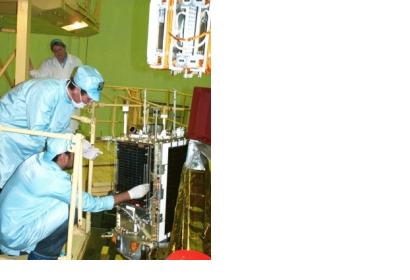Supplier of innovative small and medium-sized satellite systems SunSpace says its Sumbandila satellite has paved the way for further research and development into the requirements of a future, locally built, communications satellite over which the South African National Defence Force (SANDF) could have total control. SunSpace executive director Ron Olivier says the Sumbandila satellite proves that a locally designed and built satellite can provide more up-to-date images on conflict and disaster than Google Earth, where images in lesser-known areas are up to 30 years old. Buying images from international suppliers also holds the disadvantages of price escalations and the unavailability of images of certain areas.
The SANDF would be able to use this satellite technology to obtain real-time terrain analysis for peace operations in unknown territories and spread spectrum analyses, as well as use the platform for intermittent highly secure communications in peace operations outside South African borders and stereoscopic satellite image information to construct accurate digital elevation models in unknown territories. “Local satellites are critical for independent assessment purposes. Satellites are critical in modern society. From navigation to communications, modern technologi- cal networks cannot function without the critical infrastructure provided by satellites,” he states.
The Sumbandila satellite is a small earth observation satellite technology demonstrator and was developed and manufactured by SunSpace engineers. It was launched on September 17, 2009, from Baikonur, Kazakhstan. Sumbandila weighs 82 kg and carries a high-resolution imaging payload, an experimental communications payload and a Radio Amateur Satellite Corporation transmitter, among other technologies. The satellite was built with many purposes in mind, including space technology development, scientific and engineering human capacity development to establish South Africa as a space-faring nation and the stimulation of academic programmes around space technology. The main goals from a science and engineering perspective were to successfully demonstrate new South African technology in imaging and spacecraft design.
“To date, Sumbandila has produced 2 121 images in total, of which 1 128 were classified as low to zero cloud cover. We have, since, dramati- cally improved our success rate,” says SunSpace software development team leader Dr Jacobus van Zyl. Olivier notes that, of all the satellites launched on the same rocket at the same time, the Sumbandila, which operated for two years, had the longest operational life, despite not remaining fully operational for its three-year design life. He adds that it provided high-quality images and good amateur radio communications until it was subjected to the radiation of a big solar storm. “After two-and-a-quarter years, Sumbandila is still alive and responding today. However, it is not capable of imaging anymore, a function that it retained for two years,” Van Zyl adds. “While Sumbandila can no longer serve South Africa directly, the effects of this technology continue to shape space science and technological human capacity development, spacecraft engineering, industrial participation, critical component procurement and image data processing for the next generation of South African satellites,” states Olivier.
SunSpace hopes to incorporate the knowledge gained from previous satellite developments into future designs. Extending the operational life of satellites is a key focus for the company. “We plan to roll out designs shaped by these lessons for satellites in the African Resource Management Constellation, the potential Indian/Brazil/South African satellites, very high resolution earth observation satellites, navigation satellite gap fillers and potential future communication satellites,” notes Olivier. Automation of the proprietary satellite mission control system for control and image data processing that will eventually be independent of satellite sources is a popular area in the satellite imaging development chain. Van Zyl and his team are currently working towards improving satellite imaging developments, as well as investigating ways in which technology can be applied to further benefit South Africa. “There are many other military and intelligence payloads that can be hosted by satellites and we are excited to be able to work with other local manufacturers should the need arise,” says Olivier.

